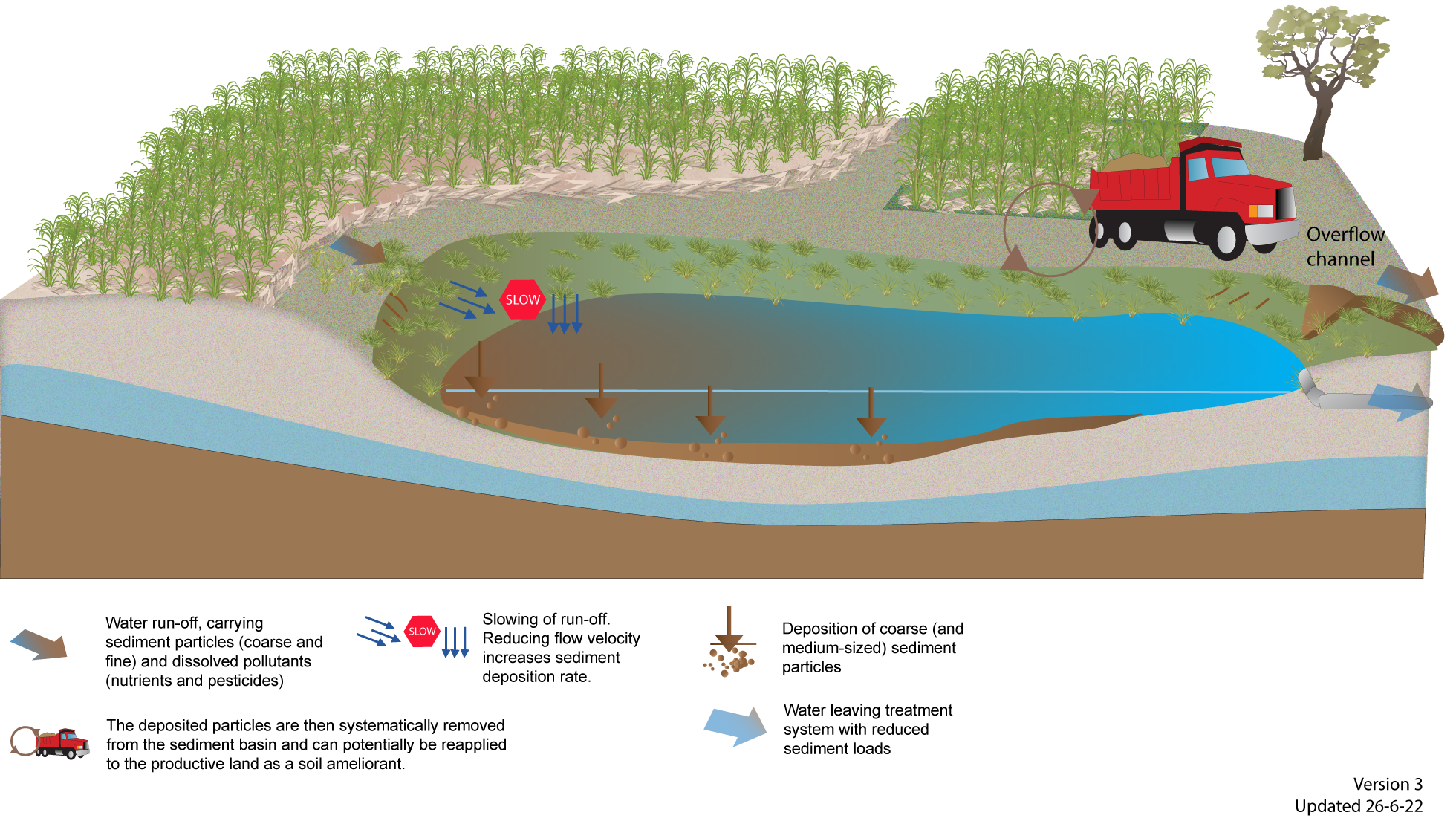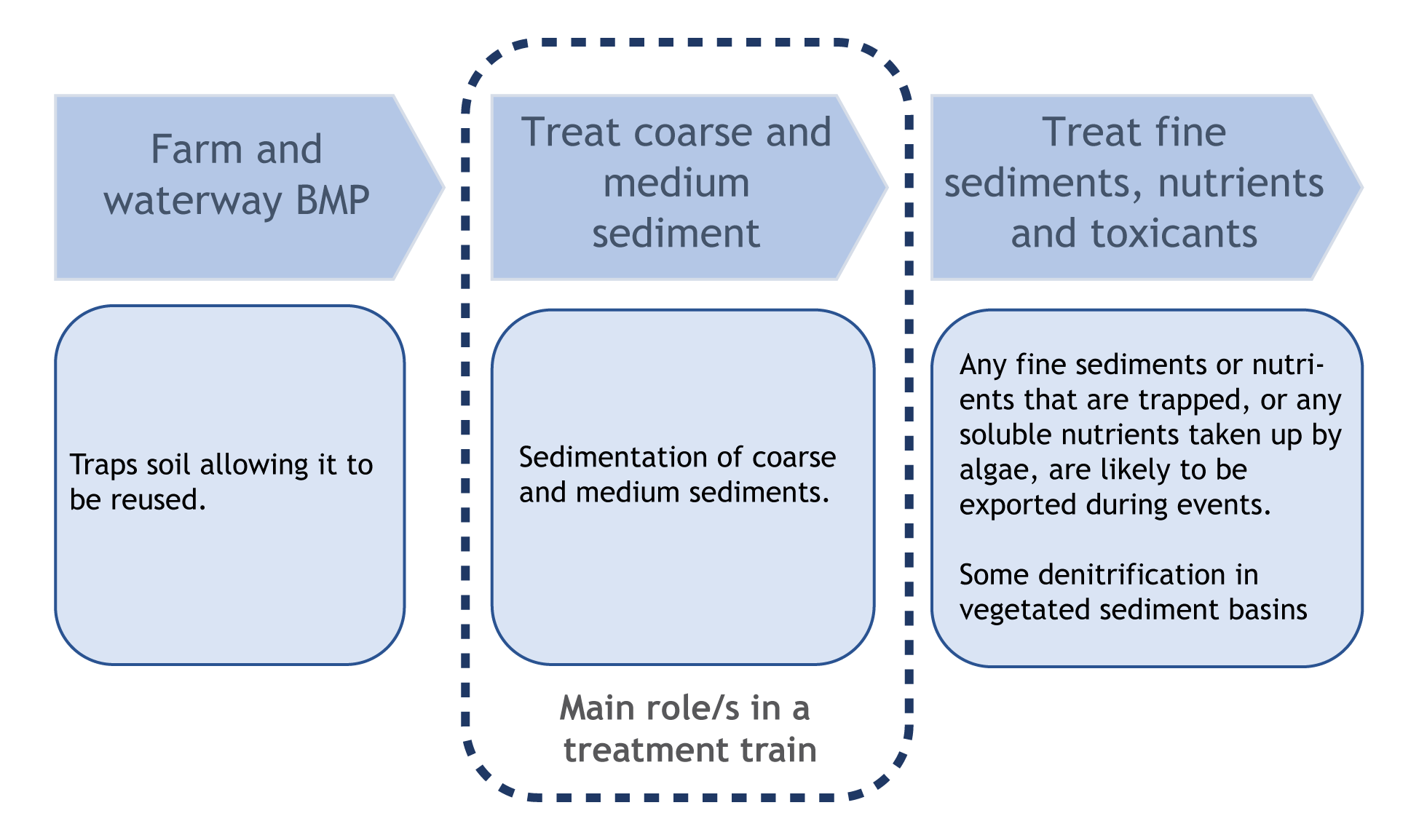|
|
Sediment basinsSediment basins — Key considerationsSelect from the tabs below What makes an effective sediment basin?
Case study: Whole of farm approach to managing water to improve water security and water quality in the Whitsunday region. Treatment processes
Suitability and limitationsSediment basins have been used in a range of agricultural production systems and locations throughout Queensland, particularly where there is a high risk of sediment loss, i.e. during tillage, land preparation, planting or harvesting and where crops are grown on slopes. A type of sediment basin, called sedimentation or settlement ponds, are commonly used to treat aquaculture wastewater. These ponds often take up a significant proportion of the productive area on a farm, with up to 30% of the productive land on a prawn farm dedicated to these ponds[1]. They have been shown to be effective at reducing total suspended solids (by up to 60%) in prawn farm discharge in Queensland[3]. They can also remove some particulate nutrients, but these may get remineralised into dissolved forms back into the water, leading to little overall reduction in total nitrogen and phosphorus[3]. The cost-effectiveness of a sediment basin in removing the target pollutant/s needs to be considered relative to other treatment structures or management intervention options. Refer to cost considerations for more information. DisclaimerIn addition to the standard disclaimer located at the bottom of the page, please note the content presented is based on published knowledge of treatment systems. Many of the treatment systems described have not been trialled in different regions or land uses in Queensland. The information will be updated as new trials are conducted and monitored. If you have any additional information on treatment systems or suggestions for additional technologies please contact us using the feedback link at the bottom of this page. References
Last updated: 5 November 2022 This page should be cited as: Department of Environment, Science and Innovation, Queensland (2022) Sediment basins — Key considerations , WetlandInfo website, accessed 8 May 2025. Available at: https://wetlandinfo.des.qld.gov.au/wetlands/management/treatment-systems/for-agriculture/treatment-sys-nav-page/sediment-basins/design-summary.html |

 — Department of the Environment, Tourism, Science and Innovation
— Department of the Environment, Tourism, Science and Innovation



